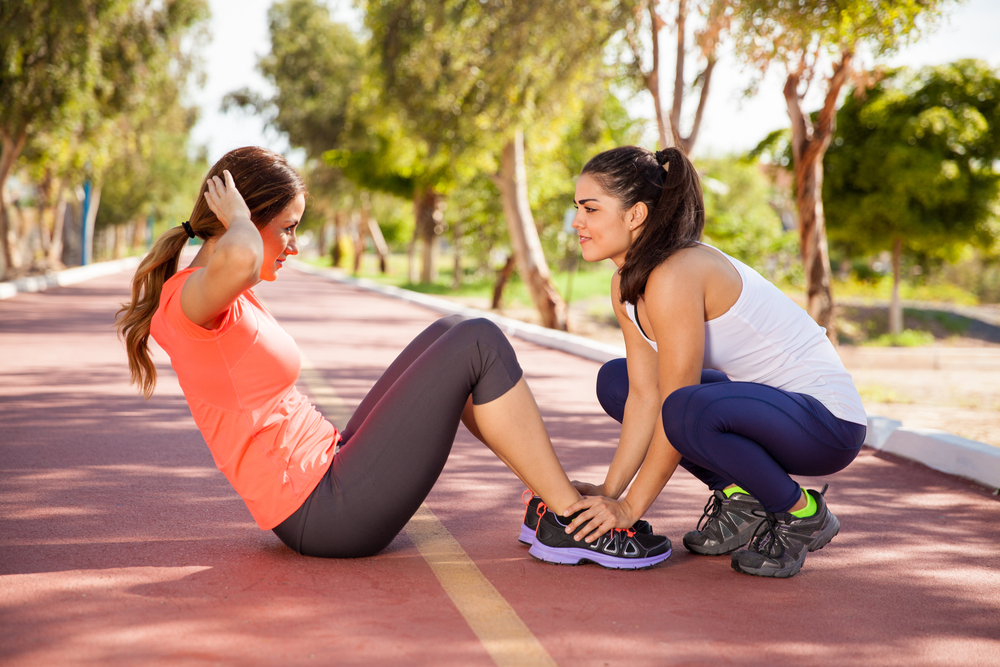Choose the right weight. You could injure yourself if you lift too much weight. Lifting weights too lightly will not do much to reduce your flab. A good rule is to lift the weights in good form eight times. If you cannot lift it that many times, the weights are too heavy.
It is always good to lift with a buddy. Beginners might want to find someone who can help them lift weights. This person can serve three purposes. She can help you if your legs are tired and you struggle to finish the last repetition. She can also ensure that you’re using proper form. Third, she can give encouragement to first-time lifters.
Exhale immediately. Weight lifters hold their breath which can increase their blood pressure. Exhale when you lift the weight or perform the crunch and then inhale after you return to your starting position or lower the weight.
Calm the tension. We tend to tighten the other muscles when we contract a muscle. During strength training, you should only contract the muscles that are being worked. Check for common problems: Do not clench your teeth, furrow your brow or tighten your shoulders around your ears.
Slow down. Fast, herky-jerky movements can cause injury. They can also cause injuries. You may also lift weights using momentum rather than your muscles. Slow and controlled movements are safer, but also require more effort.
Perfection of form is key. A good form, or doing an exercise the correct way, will help you to get the maximum benefit and avoid injury. Positioning yourself in front a full length mirror is a great way to check your lifting technique. Be sure to keep your wrists straight and not bent forward or backward. Be sure to follow the instructions exactly.
Be aware of your posture. If you are lifting dumbbells while standing or sitting, make sure your neck, back and head remain straight. This will prevent injury and muscle strain. And good posture doesn’t mean standing stiff. Standing tall and relaxed is the best posture. Sit up straight and place your feet on the floor if you are doing the exercise.
Don’t lock your elbows or knees when lifting weights. When lifting weights, avoid locking your knees or elbows. When you lock a knee or elbow, the joint takes the strain of the weight and not the muscles. To avoid joint discomfort, stop the movement just before locking your elbows or knees.
Break between sets. After completing a set, take a 1 to 2 minute break to allow your muscles to recover and prepare for the following set. You can save time by doing an exercise that targets another muscle group. Try alternating leg and arm exercise.
Stretching is a great way to finish your workout. Stretching is best done after a workout when your muscles have warmed up. Lifting weights shortens and contracts your muscles making them less flexible. Stretching after weight lifting will restore muscle length, and keep them flexible. This prevents injuries in the long term. Inflexibility makes you more susceptible to injury because your muscles are not elastic, but rather tight.
Take a rest day. You should give your muscles at least one day of rest between sessions of resistance-training. During this time, your muscles actually get stronger. Lifting weights causes small tears in muscle tissue. As you repair the damage to your muscles, they grow stronger.







